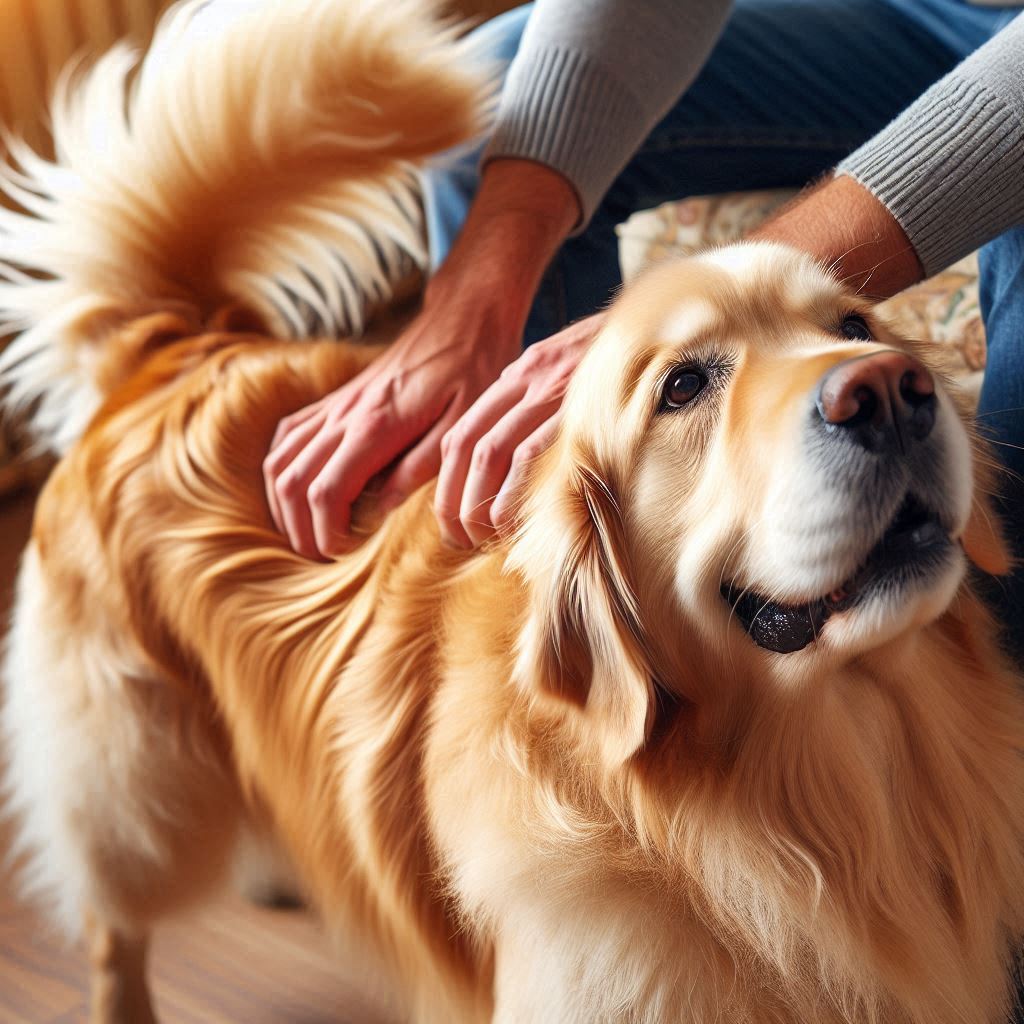Understanding your dog’s body language is essential for maintaining a healthy and trusting relationship. One common behavior that might puzzle dog owners is when their furry friend arches their back upon touch. In this article, we’ll delve into the reasons behind this behavior and how to respond appropriately.

Reasons for Arching Back:
1 – Pain or Discomfort:
One of the primary reasons why your dog might arch their back is due to pain or discomfort. This discomfort can stem from various sources, including:
- Muscle Strain or Injury: Activities like jumping or rough play may lead to muscle strain or minor injuries in the back. Touching the affected area can induce further discomfort, prompting the dog to arch away.
- Arthritis or Joint Pain: Older dogs, in particular, may suffer from arthritis, causing inflammation and pain in their spine joints. Touching their back may exacerbate this pain, resulting in an arching response.
- Skin Irritation or Allergies: Skin conditions such as allergies or insect bites can cause itching and irritation. When these irritations occur on the back, touching the area may cause the dog to arch away to avoid aggravating the discomfort.
2 – Fear or Anxiety:
Less commonly, arching the back can be a manifestation of fear or anxiety. This may be evident if:
- The arching is accompanied by other fear-related behaviors such as a tucked tail, flattened ears, or growling.
- The dog displays sensitivity to touch in specific areas, especially around the tail base.
- There is a history of anxiety or fearfulness, particularly in dogs from neglectful or abusive backgrounds.
Differentiating Factors:
- Severity of Arching: Mild discomfort may result in a gentle arch, whereas pronounced arching coupled with fearful body language suggests anxiety.
- Vocalizations: Growling or whining may indicate pain or fear, while a wagging tail could signal mild discomfort or playfulness, depending on the context.
- Location of Touch: If the dog only arches when touched in a specific spot, it’s more likely due to pain in that area.
Recommended Actions:
- Stop Touching: If your dog seems uncomfortable, it’s crucial to respect their boundaries and refrain from further touching.
- Observe Body Language: Pay attention to your dog’s overall demeanor to better understand their emotional state.
- Consult a Veterinarian: If you suspect pain or discomfort, seek advice from a veterinarian for proper diagnosis and treatment.
- Positive Reinforcement: For anxious dogs, employ positive reinforcement techniques to build trust gradually.
Conclusion:
Understanding why your dog arches his back when touched is key to maintaining a healthy relationship. By recognizing signs of pain, discomfort, or anxiety, you can respond appropriately and ensure your furry companion feels safe and cared for. Remember, when in doubt, consult with a veterinarian to address any underlying medical issues and strengthen the bond with your beloved pet.
